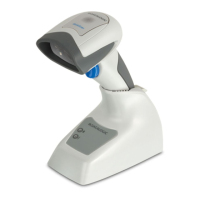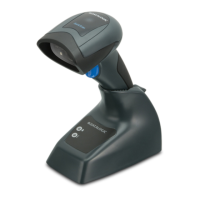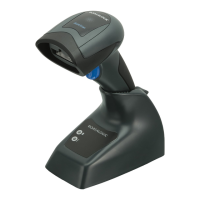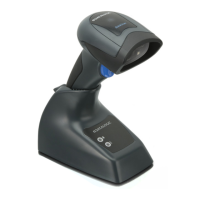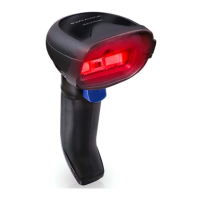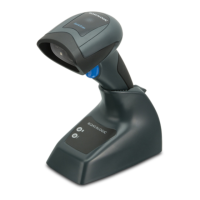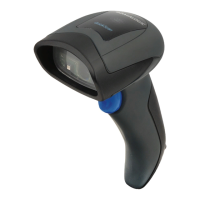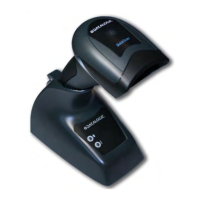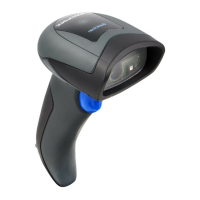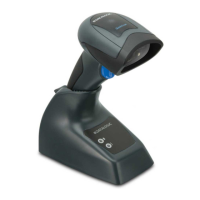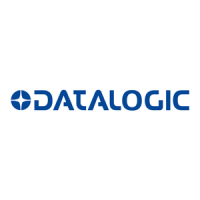
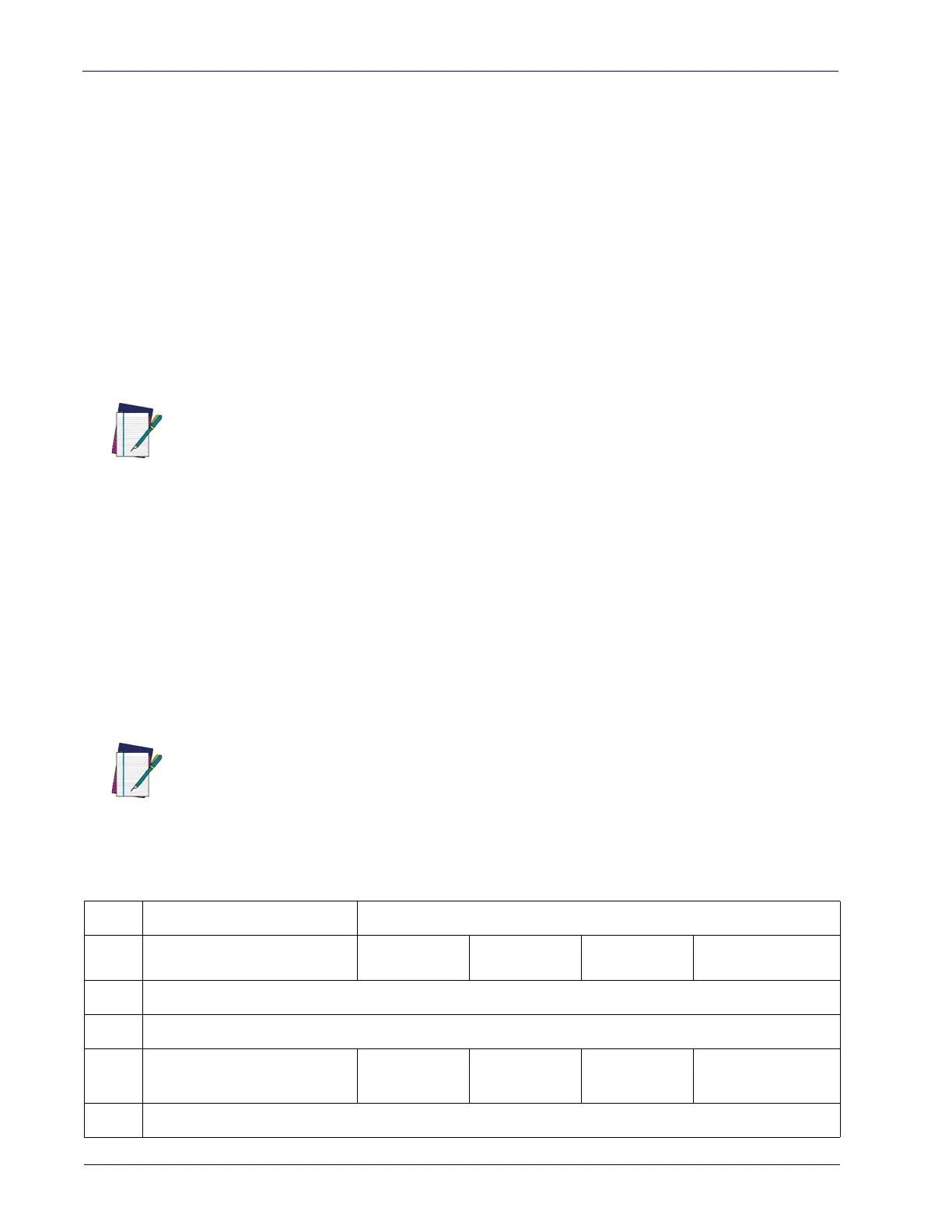
Do you have a question about the Datalogic QuickScan I QBT21X1 and is the answer not in the manual?
| Type | Handheld |
|---|---|
| Humidity | 5% to 95% non-condensing |
| Connectivity | Bluetooth |
| Scanning Technology | Imager |
| Interface | USB, RS-232 |
| Scan Rate | 400 scans/sec |
| Light Source | LED |
| Resolution | 4 mil |
| Supported Barcodes | UPC, EAN, Code 39, Code 128 |
| Operating Temperature | 32°F to 122°F (0°C to 50°C) |
| Storage Temperature | -40°C to 70°C |
| Drop Specification | 1.5 m drop resistance |
| Power Supply | Rechargeable battery |
| Cable Length | 2 m |
| Battery Life | Up to 30, 000 scans per charge |
| Decode Capability | 1D barcodes |
Outlines steps for cordless models: configuring base station, charging batteries, linking, and selecting interface type.
Guides on verifying cable compatibility and connecting the reader to the host device, including Wedge 'Y' cables.
Details linking RF devices, including unlinking previous bases and checking link status via tones/LEDs.
Explains how to link a Bluetooth reader to a PC in Server Mode (BT Slave Mode) via drivers and discovery.
Explains inserting the reader into the base for charging and alternative charging via micro-USB.
Provides critical safety warnings for handling, charging, and using Lithium-ion battery packs to prevent hazards.
Step-by-step guide on how to remove and mount a battery pack using a screwdriver and the captive screw.
Lists supported host interfaces for reader models: USB (KBD, COM STD, OEM) and RS-232/Keyboard Wedge.
Explains scanning interface type bar codes and proceeding to corresponding chapters for configuration.
Explains how to use programming bar codes, including entering/exiting Programming Mode and scanning parameters.
Describes the Aladdin utility for PC-based configuration, software upgrades, and creating configuration bar codes.
Specifies whether the reader obeys or ignores host commands, except for essential service functions.
Sets the data transmission speed per second to match the host device's baud rate setting.
Configures the number of data bits (7 or 8) for the ASCII protocol, affecting sending and receiving data.
Sets the number of stop bits (1 or 2) to mark the end of transmission and prepare for the next character.
Selects the country/language supported by the keyboard for USB Keyboard and Keyboard Wedge interfaces.
Allows adding up to 20 ASCII characters as a prefix or suffix to bar code data.
Sets minimum time between reads of the same label to prevent double reads.
Selects the scan operating mode, including Trigger Single, Trigger Hold, Flashing, Always On, and Autosense.
Configuration options for the UPC-A symbology, including enable/disable and check character transmission.
Configuration options for the UPC-E symbology, including enable/disable and check character transmission.
Configuration options for the EAN 13 (Jan 13) symbology, including enable/disable and check character transmission.
Configuration options for the EAN 8 (Jan 8) symbology, including enable/disable and check character transmission.
Configuration options for the Code 39 symbology, including enable/disable and check character settings.
Configuration options for the Code 128 symbology, including enable/disable and expansion to Code 39.
Configuration options for the Code 11 symbology, including enable/disable and check character settings.
Configures beeper behavior for RF operation, including transmission beeps and frequency.
Ensures reader and base station configurations stay synchronized automatically.
Specifies whether to store labels in handheld when disconnected: Disabled, Automatic, or Manual.
Enables or disables linking a wireless handheld to a base station without scanning an Unlink label first.
Configuration options specific to Bluetooth models, including RF address stamping and delimiter characters.
Enables/disables transmitting source radio address info to host and specifies its position.
Settings for BT security, including enabling security mode and setting a PIN code.
Enables or disables authentication and encryption of the BT link.
Sets wait time before transmission between handheld and Base Station is considered failed.
Specifies the transmission protocol for Star communications (ACK options).
Details rules for Host-to-Base messages, including address stamping, character limits, and CR termination.
Explains how to send additional info with bar codes, forming a 'message string' with features like Prefix, Label ID, AIM ID.
Allows adding up to 20 ASCII characters as a prefix or suffix to bar code data.
Explains configuring decoder aggressiveness for symbologies, from conservative to aggressive.
Ensures reader and base station configurations stay synchronized automatically.
Specifies the 4-character or 16-character PIN code for BT authentication and encryption.
Lists LED flashes/beep codes associated with errors, including corrective actions.
